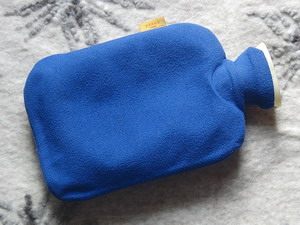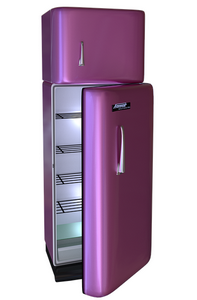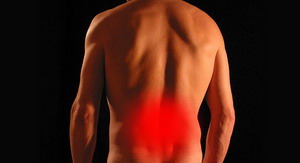 A frequent argument among clinicians treating muscle and joint pain is over which is better, heat or cold therapy. I find this behavior common in many areas of life. People want to know what is the best thing to do in each situation. If we lived in a digital world of just ones and zeros, just black and white, this question makes logical sense. Pick the best choice and you will get the best results. But this isn’t a digital world. Life can not be reduced to simple right and wrong choices. Life is fuzzy and vague and always shifting around. Most of all life is very very complex. Either/Or thinking is too simplistic and fails to get good results in life.
A frequent argument among clinicians treating muscle and joint pain is over which is better, heat or cold therapy. I find this behavior common in many areas of life. People want to know what is the best thing to do in each situation. If we lived in a digital world of just ones and zeros, just black and white, this question makes logical sense. Pick the best choice and you will get the best results. But this isn’t a digital world. Life can not be reduced to simple right and wrong choices. Life is fuzzy and vague and always shifting around. Most of all life is very very complex. Either/Or thinking is too simplistic and fails to get good results in life.
 Heat and cold each have their virtues and their drawbacks. Let’s start with heat. Heat serves to open up blood flow to the area being treated. The increased blood flow decreases muscle spasms and improves range of motion mobility. As mobility opens up, pain is reduced. Most of the time this is a good thing, but not always. What if you have an open wound that wants to bleed? Would you want to encourage more blood flow to the area? Of course not. That would just produce even more bleeding. Suppose the injured area is all swollen up? That means the circulation has already opened up and dumped fluid into the injury site. More fluid is probably not indicated, particularly if the area is also feeling hot. That might mean some infection is being fought and the body is already using the right amount of heat to help fight the infection.
Heat and cold each have their virtues and their drawbacks. Let’s start with heat. Heat serves to open up blood flow to the area being treated. The increased blood flow decreases muscle spasms and improves range of motion mobility. As mobility opens up, pain is reduced. Most of the time this is a good thing, but not always. What if you have an open wound that wants to bleed? Would you want to encourage more blood flow to the area? Of course not. That would just produce even more bleeding. Suppose the injured area is all swollen up? That means the circulation has already opened up and dumped fluid into the injury site. More fluid is probably not indicated, particularly if the area is also feeling hot. That might mean some infection is being fought and the body is already using the right amount of heat to help fight the infection.
 Another consideration for both heat and cold is when the person has numbness or any loss of normal sensation in the treatment area. Without proper feeling feedback, the patient will not be able to tell when the area is too hot and they might get burned. Similar issues exist when using cold. Without proper feeling, frostbite could occur. Many times a person might not even know that they have impaired sensation because it is being masked by their pain (which travels on different nerves.) To check this, put the therapy on an uninvolved area of the body and have them compare the sensation to using the therapy on the injured area. There may be special considerations about using heat on a person with high blood pressure or heart disease.
Another consideration for both heat and cold is when the person has numbness or any loss of normal sensation in the treatment area. Without proper feeling feedback, the patient will not be able to tell when the area is too hot and they might get burned. Similar issues exist when using cold. Without proper feeling, frostbite could occur. Many times a person might not even know that they have impaired sensation because it is being masked by their pain (which travels on different nerves.) To check this, put the therapy on an uninvolved area of the body and have them compare the sensation to using the therapy on the injured area. There may be special considerations about using heat on a person with high blood pressure or heart disease.
Heat seems to work best on:
muscle spasms
muscle warmup before use
tendonitis, chronic tendon stiffness, and discomfort
muscle sprains/strains
osteoarthritis
 The ideal temperature for heat therapy is just a bit above body temperature – say 104 to 115 degrees. The heat should feel warm, but not hot. We are not trying to cook the body, just stimulate blood flow. I like to use a hot shower when it is available. Otherwise, a heating pad or a gel pack heated in the microwave works well. Again, be sure the pad is not too hot. If your whole back is sore from over-exercise then a nice soak in a tub with Epsom salts works wonders. There the added benefit of the magnesium from the Epsom salts soaking in through the skin also helps to relax the muscles.
The ideal temperature for heat therapy is just a bit above body temperature – say 104 to 115 degrees. The heat should feel warm, but not hot. We are not trying to cook the body, just stimulate blood flow. I like to use a hot shower when it is available. Otherwise, a heating pad or a gel pack heated in the microwave works well. Again, be sure the pad is not too hot. If your whole back is sore from over-exercise then a nice soak in a tub with Epsom salts works wonders. There the added benefit of the magnesium from the Epsom salts soaking in through the skin also helps to relax the muscles.
 What about cold therapy? Cold does the opposite of heat. Cold reduces blood flow which helps to pull water and fluid out of an area. This reduces inflammation, pain, and swelling. This is especially popular right after an injury as the body frequently likes to produce swelling immediately after an injury, and the swelling itself generates pain. This is particularly true when the tissue is encapsulated like the capsules around the spinal joints or within a bursa sack. The trapped swelling has no place to expand, so it stretches the capsule, like a tight water balloon, causing great pain.
What about cold therapy? Cold does the opposite of heat. Cold reduces blood flow which helps to pull water and fluid out of an area. This reduces inflammation, pain, and swelling. This is especially popular right after an injury as the body frequently likes to produce swelling immediately after an injury, and the swelling itself generates pain. This is particularly true when the tissue is encapsulated like the capsules around the spinal joints or within a bursa sack. The trapped swelling has no place to expand, so it stretches the capsule, like a tight water balloon, causing great pain.
Cold is good for:
recent injuries
reducing inflammation in a joint
muscle strains
tendonitis
gout
osteoarthritis
 Gel-type cold packs kept in either the refrigerator or freezer are convenient to have on hand. Freezer cold is too cold to put on the skin directly, so several layers of cloth must be wrapped around a frozen cold pack if used. All too often my patients tell me they use a bag of frozen peas. That will work, but it’s gross. If you are a professional athlete, you might even dunk your whole body in a tank of ice water to reduce the pain after an intense workout. At times, when an injury is to a joint like an elbow, wrist, or knee, I will recommend using an ice cube directly on the inflamed area, moving it around, for about 2 – 3 minutes. However, an important point, it is never recommended to use ice on the spine. There are seven layers of muscle wrapping around the spine, and ice slows down circulation so much that it can easily cause a cramp. A cramp in those muscles will cause a pinching of the spinal nerves and you will be in pain, a lot of it. So, no ice on the spine – cold only!
Gel-type cold packs kept in either the refrigerator or freezer are convenient to have on hand. Freezer cold is too cold to put on the skin directly, so several layers of cloth must be wrapped around a frozen cold pack if used. All too often my patients tell me they use a bag of frozen peas. That will work, but it’s gross. If you are a professional athlete, you might even dunk your whole body in a tank of ice water to reduce the pain after an intense workout. At times, when an injury is to a joint like an elbow, wrist, or knee, I will recommend using an ice cube directly on the inflamed area, moving it around, for about 2 – 3 minutes. However, an important point, it is never recommended to use ice on the spine. There are seven layers of muscle wrapping around the spine, and ice slows down circulation so much that it can easily cause a cramp. A cramp in those muscles will cause a pinching of the spinal nerves and you will be in pain, a lot of it. So, no ice on the spine – cold only!
 This cramping issue is one of the main contraindications for using cold. Don’t use cold on muscles that want to cramp. As before, also don’t use cold on an area that can’t feel the cold well. You need to be able to feel if you are freezing your body. Areas of the body that have compromised circulation, like the feet of diabetics, also don’t want cold. Some people are simply ultra-sensitive to cold, so don’t use it if that is the case. In general, you don’t use cold on an open wound as you need blood to get to the wound to heal it. The exception to this is immediately after an injury and when you need to stop the bleeding. Here, ice can be beneficial. Head injuries are typical types of injuries that bleed a lot and need ice to help stop the blood.
This cramping issue is one of the main contraindications for using cold. Don’t use cold on muscles that want to cramp. As before, also don’t use cold on an area that can’t feel the cold well. You need to be able to feel if you are freezing your body. Areas of the body that have compromised circulation, like the feet of diabetics, also don’t want cold. Some people are simply ultra-sensitive to cold, so don’t use it if that is the case. In general, you don’t use cold on an open wound as you need blood to get to the wound to heal it. The exception to this is immediately after an injury and when you need to stop the bleeding. Here, ice can be beneficial. Head injuries are typical types of injuries that bleed a lot and need ice to help stop the blood.
 Now if you look at the list of what to use heat on and what to use cold on, you will notice a lot of the same things. What is that telling us? What it told me 45 years ago while in a physical therapy class is that the argument about which is better is stupid. Obviously, both are needed most of the time. The most common situation I encounter in the office is with back pain. Generally, with back pain, you have several things happening at once. Muscles are in spasms causing pain. These guys want 15 to 20 minutes of heat to relax them. The spasm causes pinching of the joints and bruises the joint capsules which creates trapped swelling, so these guys want cold to dissipate that swelling. Since the joint capsules are almost 2 inches deep into the spine, ice cubes are not going to work. Ice cubes are only for concerns right under the surface a quarter inch or so. Here we need a refrigerator temperature cold pack over the painful area for 15 to 20 minutes right after you have used the heat pack.
Now if you look at the list of what to use heat on and what to use cold on, you will notice a lot of the same things. What is that telling us? What it told me 45 years ago while in a physical therapy class is that the argument about which is better is stupid. Obviously, both are needed most of the time. The most common situation I encounter in the office is with back pain. Generally, with back pain, you have several things happening at once. Muscles are in spasms causing pain. These guys want 15 to 20 minutes of heat to relax them. The spasm causes pinching of the joints and bruises the joint capsules which creates trapped swelling, so these guys want cold to dissipate that swelling. Since the joint capsules are almost 2 inches deep into the spine, ice cubes are not going to work. Ice cubes are only for concerns right under the surface a quarter inch or so. Here we need a refrigerator temperature cold pack over the painful area for 15 to 20 minutes right after you have used the heat pack.
 I have used this protocol for the last 41 years and I find it works 95% of the time. An extra bit of information is helpful here. Nerves are only sensitive to the effects of heat and cold in the first inch of the spine. Further down the nerves don’t respond much to either heat or cold. So even though you may have pain all the way down your leg from a pinch of the sciatic nerve in your low back, putting heat and cold on your leg generally does nothing. Heat might relax some muscle spasms, but cold really does nothing.
I have used this protocol for the last 41 years and I find it works 95% of the time. An extra bit of information is helpful here. Nerves are only sensitive to the effects of heat and cold in the first inch of the spine. Further down the nerves don’t respond much to either heat or cold. So even though you may have pain all the way down your leg from a pinch of the sciatic nerve in your low back, putting heat and cold on your leg generally does nothing. Heat might relax some muscle spasms, but cold really does nothing.
 Hopefully, this guides you on what to use at home and when. If your back is acting up, try a hot shower followed by a couple of cold packs and a good night’s rest. If that does not loosen things up the next day then it is time to call for an appointment to see me. Heat and cold can really save the day when used properly, but sometimes the body needs a little extra help.
Hopefully, this guides you on what to use at home and when. If your back is acting up, try a hot shower followed by a couple of cold packs and a good night’s rest. If that does not loosen things up the next day then it is time to call for an appointment to see me. Heat and cold can really save the day when used properly, but sometimes the body needs a little extra help.
Take care,
David
